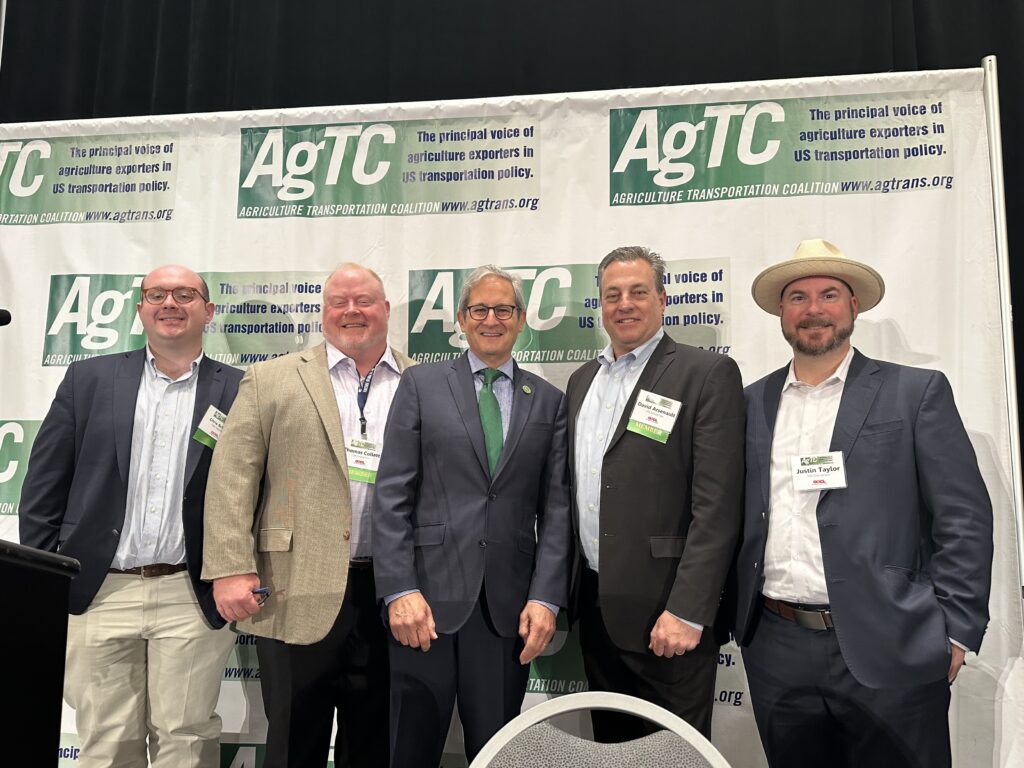Recently, GSC attended the Agricultural Transportation Coalition’s annual meeting in Tacoma, WA., in what turned out to be the largest AgTC to date. The conference was packed with industry leaders in the agriculture and logistics industry cross-section. Discussions about the challenges and opportunities within the industry were plentiful with speakers from market intelligence firms, ports, Dairy Farmers of America, and more. The content from the conference wasn’t limited to the United States; instead, but rather a global focus. We’ve gathered 3 opportunities for the road ahead for agriculture logistics.

Costs Under Control: New Demurrage and Detention Rules
The passage and implementation of the Ocean Shipping Reform Act in 2022 was a landmark moment that changed the cost assumptions of the shipping industry. Ocean carriers can no longer charge demurrage or detention for days when marine terminals are closed. Lucy Marvin, managing director of the Federal Maritime Commission (FMC), joined the AgTC conference to answer shippers’ questions and take suggestions. Despite the law’s passage a year prior, the FMC is engaged in several rulemakings regarding OSRA, and shippers’ feedback is crucial to proper implementation. Regardless, the requirement for timely billing to contractual parties, as well as the opening of an avenue for dispute resolution via the FMC provides much-needed leverage to cargo owners who have historically had little recourse directly with ocean carriers.
Emerging Nations, Emerging Markets
The United States’ largest trading partner is now facing a crisis different from the pandemic that has upended the supply chain for the last three years. China is now tackling the ramifications of an aging population and declining workforce. Combined with rising geopolitical tensions, American importers have begun to expand sourcing to Southeast Asian countries. What does this mean for American agricultural shippers? Where there are challenges, there also lies opportunities. One solution is India, poised for rapid GDP growth as it develops and invests in its domestic infrastructure. Not only does India have a growing population, overtaking China as the most populous country, but the population is also an increasingly wealthier one; thus, India remains a market that has yet to be fully explored.
Lower Rainfall – a Boon for West Coast Ports
A drought in Panama has led to lower water levels in the freshwater lakes that supply the Panama Canal. As a result, the Panama Canal Authority has issued emergency restrictions limiting the maximum draft of vessels crossing the canal. Typically having a draft maximum of 50 feet, the new limit is now a maximum of 43.5-foot draft which was implemented in June. Some carriers have already enacted the eastbound Panama Canal surcharge to combat the lower revenues generated by smaller vessels and the lower carrying capacity these draft restrictions have necessitated. But not all outcomes are adverse. This could lead to a much-needed boon to West Coast ports, which have recently experienced lower cargo volume amid shippers’ unease of ongoing ILWU contract negotiations. Thankfully, the ILWU has now reached an agreement with the PMA, restoring shippers’ confidence in West Coast ports. At the same time, restrictions on the Panama Canal could lead to more cargo routing to the West Coast.

Want to learn more about GSC and what we offer? Check out our services and solutions here.



